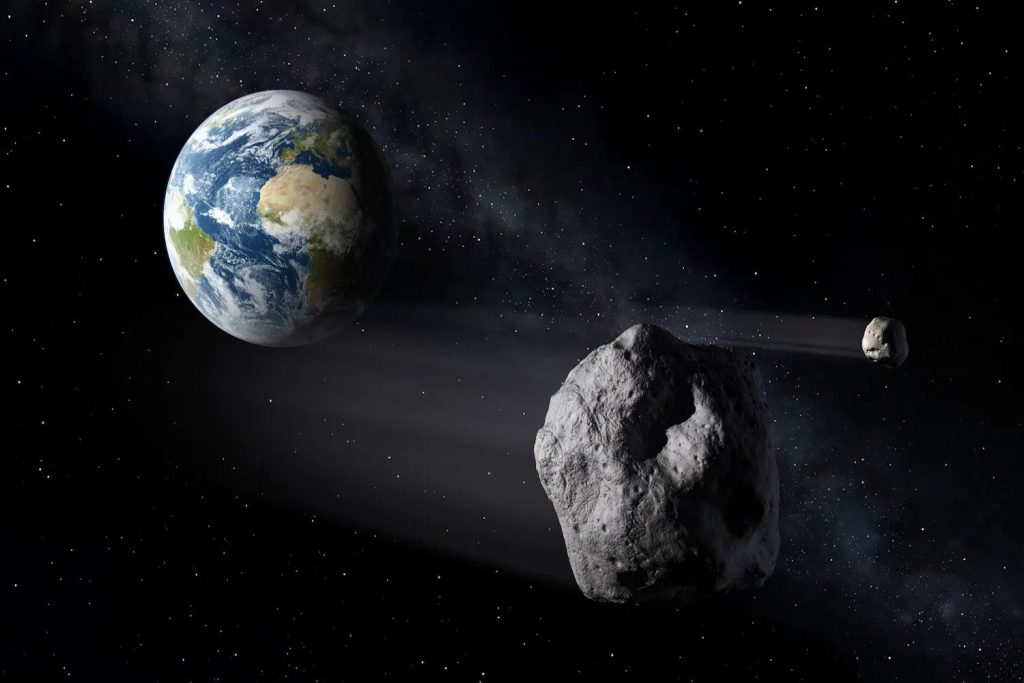A quintet of asteroids will all come close to Earth on October 24, but no need to hit the panic button. None are civilization killers, only one can be accurately called a potential hazard, and according to their calculated trajectories, they will all zoom past our planet with room to spare.
Of the five asteroids set to breeze through on Thursday, only one of them fits the bill as a potentially hazardous asteroid (PHA), and that one won’t be coming close enough to cause any alarm.
PHAs are defined as those whose closest approach to Earth is 0.05% of the average distance between our planet and the Sun. That may sound perilously close, but that’s still a distance of about 4.65 million miles (7.5 million kilometers). To be considered a PHA, an asteroid must also have an absolute magnitude of 22 or less. Although a measure of an object’s brightness, absolute magnitude can also help to determine an asteroid’s size. For a PHA, a measurement of 22 or under means the asteroid must be at least 500 feet (140 meters) across.
The largest of the five space rocks is designated NV16, and it’s been known to astronomers since 2022. According to the Jet Propulsion Lab’s Small Body Database, the space rock has an absolute magnitude of 21.4, which translates to a diameter of about 580 feet (177 meters), or about one third of the height of the Freedom Tower. That’s not big enough to destroy the planet, but a collision from an asteroid that size would seriously damage a city. The good news is, NV16 is expected to come no closer than 2.81 million miles (4.5 kilometers). The even better news is, NV16 won’t come close to Earth again until 2031, at which point it will be over 4 million miles (6.4 million kilometers) away.
NV16 will reach its closest point at 11:47 a.m. ET on Thursday, October 24. That will make it the third close visitor of the day, and it will be followed just four minutes later by the asteroid known as TR6, which is far smaller at 150 feet (46 meters) across. TR6 will keep a greater distance, coming no closer than 3.5 million miles (5.6 million kilometers).
The first asteroid of the day is predicted to be HM1, which is due to come by at 12:36 a.m. ET. Measuring just 100 feet across, the asteroid will wave high from 3.4 million miles (5.5 million kilometers) away. TP17, discovered on October 12, will follow several hours later. Measuring 170 feet (52 meters) across, TP17 will be 2.9 million miles (4.6 million kilometers) away from Earth at its closest point. TG14 will close out the day, when it sails by at a distance of 1.6 million miles (2.5 million kilometers) during the early evening. In this case, last is also the least, as TG14 measures a puny 76 feet (23 meters).
It must be stressed none of these asteroids appear to present a problem. So go about your day unbothered, gladly knowing that some of our cosmic neighbors are swinging by for a quick visit, and none will overstay their welcome.

